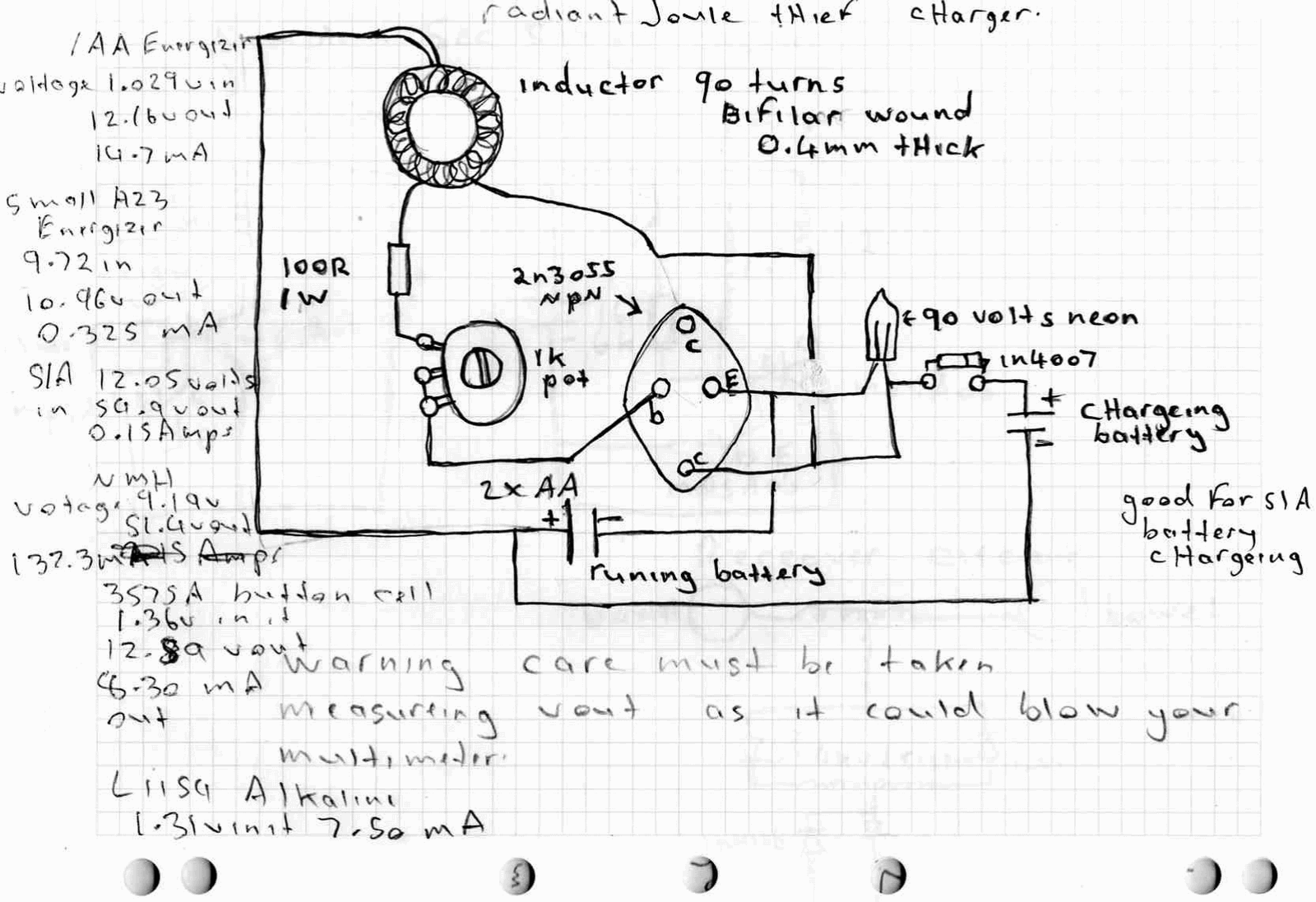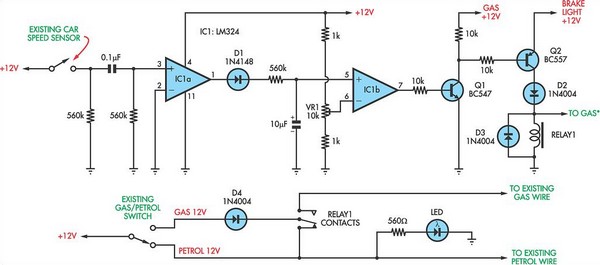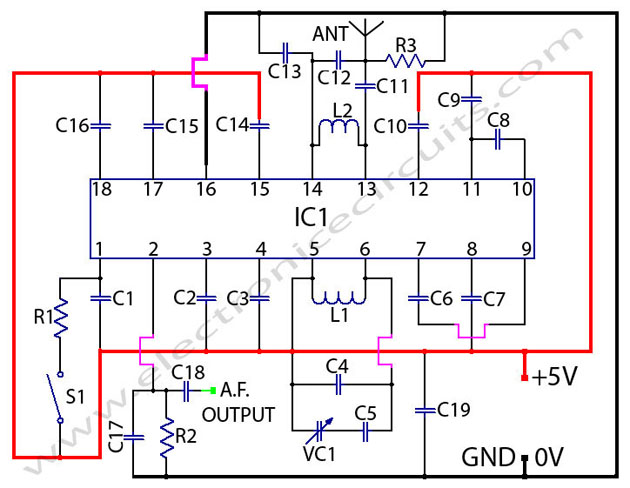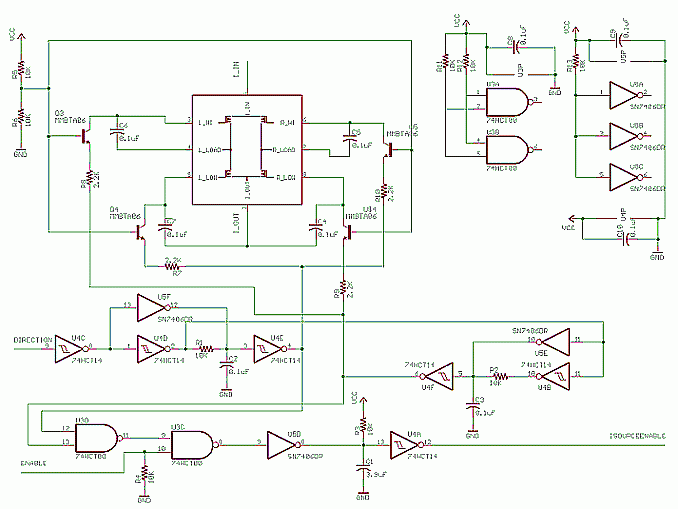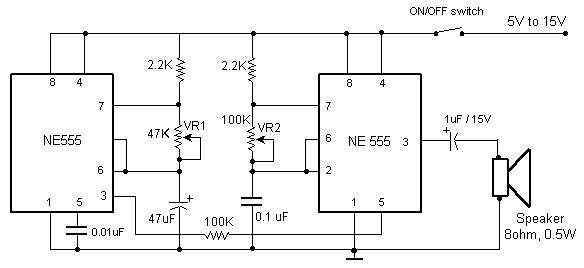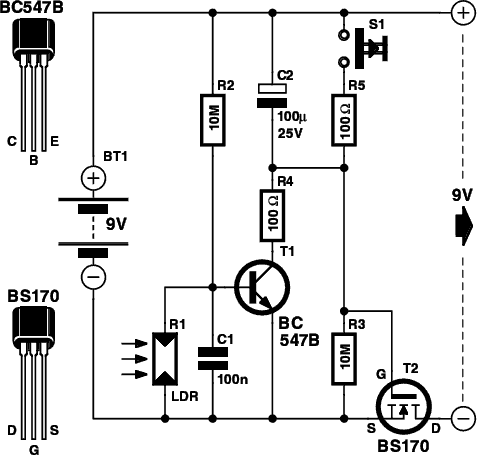
TDA7000 fm radio integrated circuit design
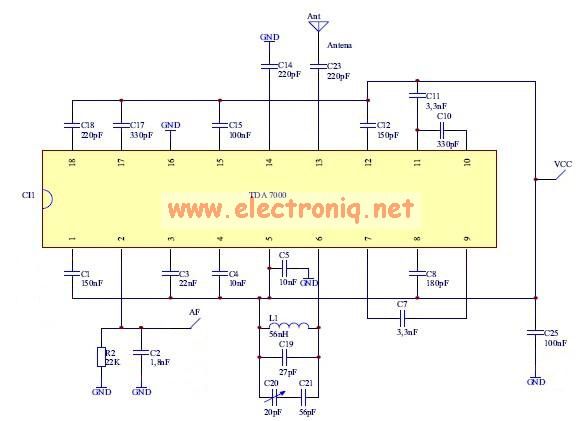
The TDA7000 features a Frequency-Locked-Loop (FLL) system with an intermediate frequency of 70 kHz, and selectivity is achieved through active RC filters. The only calibration required is for the resonant circuit associated with the oscillator, which is necessary for the reception frequency. Utilizing an integrated device such as this in an FM radio project can eliminate the need for L-C tuned circuits in the RF, IF, local oscillator, and demodulator stages. A method to remove coils from the IF and demodulator stages involves lowering the typically used intermediate frequency of 10.7 MHz to a frequency that can be adjusted using active RC filters.
The TDA7000 is an integrated circuit designed for FM radio applications, incorporating a Frequency-Locked-Loop (FLL) architecture that simplifies the design and reduces the component count in radio receivers. The FLL system operates at an intermediate frequency (IF) of 70 kHz, allowing for effective demodulation of FM signals while maintaining good selectivity and sensitivity. The selectivity is achieved through the use of active RC filters, which provide a more compact and versatile solution compared to traditional L-C circuits.
In this configuration, the only calibration required is for the resonant circuit of the oscillator. This calibration is crucial as it directly affects the reception frequency and overall performance of the radio. By utilizing the TDA7000, designers can significantly reduce the complexity of the RF, IF, local oscillator, and demodulator stages, as the integrated design minimizes the need for discrete components.
Moreover, the ability to operate at a lower intermediate frequency than the standard 10.7 MHz allows for the elimination of inductive components in the IF and demodulator stages. By tuning to a frequency that can be adjusted with active RC filters, designers can achieve a more compact layout and potentially lower production costs, while also enhancing the overall performance and reliability of the FM radio system. This integration of functions within the TDA7000 not only streamlines the design process but also improves the efficiency of the radio receiver, making it an ideal choice for modern FM radio applications.The TDA7000 has an FLL (Frequency-Locked-Loop) system with an intermediate frequency of 70 kHz and the selectivity is obtained by active RC filters. The only function which needs calibration is the resonant circuit for the oscillator (for the reception frequency ).
Using an integrated device like in this project in your FM radio can eliminate L C tuned circuits from the RF, IF, local oscillator and demodulator stages. A way to eliminate the coils in the IF and demodulator stages is to reduce the normally used intermediate frequency of 10. 7MHz to a frequency that can be tuned by active RC filters. 🔗 External reference
The TDA7000 is an integrated circuit designed for FM radio applications, incorporating a Frequency-Locked-Loop (FLL) architecture that simplifies the design and reduces the component count in radio receivers. The FLL system operates at an intermediate frequency (IF) of 70 kHz, allowing for effective demodulation of FM signals while maintaining good selectivity and sensitivity. The selectivity is achieved through the use of active RC filters, which provide a more compact and versatile solution compared to traditional L-C circuits.
In this configuration, the only calibration required is for the resonant circuit of the oscillator. This calibration is crucial as it directly affects the reception frequency and overall performance of the radio. By utilizing the TDA7000, designers can significantly reduce the complexity of the RF, IF, local oscillator, and demodulator stages, as the integrated design minimizes the need for discrete components.
Moreover, the ability to operate at a lower intermediate frequency than the standard 10.7 MHz allows for the elimination of inductive components in the IF and demodulator stages. By tuning to a frequency that can be adjusted with active RC filters, designers can achieve a more compact layout and potentially lower production costs, while also enhancing the overall performance and reliability of the FM radio system. This integration of functions within the TDA7000 not only streamlines the design process but also improves the efficiency of the radio receiver, making it an ideal choice for modern FM radio applications.The TDA7000 has an FLL (Frequency-Locked-Loop) system with an intermediate frequency of 70 kHz and the selectivity is obtained by active RC filters. The only function which needs calibration is the resonant circuit for the oscillator (for the reception frequency ).
Using an integrated device like in this project in your FM radio can eliminate L C tuned circuits from the RF, IF, local oscillator and demodulator stages. A way to eliminate the coils in the IF and demodulator stages is to reduce the normally used intermediate frequency of 10. 7MHz to a frequency that can be tuned by active RC filters. 🔗 External reference
